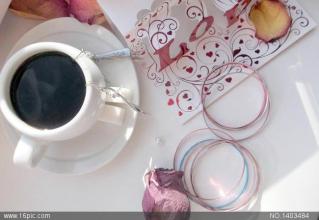Introduction to the fermentation process of flavor and taste of price varieties of civet coffee
In the coffee industry, cat poop coffee is widely regarded as a novelty product. According to the Specialty Coffee Association of America (SCAA),"the consensus in the industry is that it tastes bad." SCAA quoted a coffee expert as saying: "Obviously, the selling point of cat poop coffee lies in its story rather than its quality. Cat poop coffee scored two points lower than the lowest score of the other three coffees on SCAA criteria. Presumably the cat poop coffee processing reduces the acidity and flavor of the premium coffee and makes it more bland. Of course, many people seem to see this bland taste as an advantage of this coffee. After processing and roasting, cat poop coffee became a luxury coffee drink and spread to luxury kingdoms all over the world. Local coffee farmers, in pursuit of high profits, capture wild civets and raise them at home so that they can produce more cat poop coffee. However, the quality and taste of cat feces coffee produced by raised civets would be correspondingly inferior. Even so, production of this coffee is scarce and not affordable for all coffee lovers.
The coffee comes from the droppings of an animal called a civet (commonly known as a civet in Indonesia). Although it comes from smelly poop, it tastes sweet and has an indescribable sweetness. This wild civet likes to eat fat and thick coffee fruit, but the hard fruit core (green beans) cannot be digested and excreted with feces. After washing, it becomes Kopi Luwak coffee green beans! Many people call it cat shit coffee. Indonesian people found that the coffee beans fermented by the civet stomach were particularly thick and fragrant, so they collected the civet feces, sifted out the coffee beans, and brewed them to drink. Due to the scarcity of production and the unique fermentation process, the flavor was greatly different from ordinary coffee. Traditionally, coffee fruit has been used
civet
civet
Luwak, however, uses natural fermentation in vivo to extract coffee beans, which have a special flavor
Luwak coffee remains a veritable luxury on the international market, not least because it is made not by humans but by wild animals. Traditionally, coffee fruit is washed or sun-dried to remove the peel, pulp and sheepskin layer, and finally the coffee beans are taken out, but Luwak coffee is made by natural fermentation in wild animals. Moreover, these wild animals are only found on small islands like Indonesia. The time and place of their appearance are mysterious, and their numbers are decreasing day by day. Indonesia has claimed that conservation and breeding have helped keep the civets stable, but the digestive system that created them to tempt human taste buds has nothing to do with industrial-age products.
"Civets" are omnivores. They are solitary and nocturnal. They inhabit tropical rain forests, subtropical evergreen broad-leaved forests, mountain shrubs or hills, mountains, grass and other places below 2000 meters above sea level. Its food includes small mammals, birds, amphibians and reptiles, crustaceans, insects and plant fruits, seeds and so on. "Civet" likes to choose the most ripe, sweet, full and juicy coffee fruit in the coffee tree as food, and the coffee fruit passes through its digestive system, only the pulp of the fruit is digested, and the hard coffee beans are then excreted intact by the "civet" digestive system. This is the "natural fermentation method" that was once scorned by Americans. It is said that when Americans heard that there was a way to make coffee in this way, they thought it was a fantasy until it was reported by National Geographic magazine.

Important Notice :
前街咖啡 FrontStreet Coffee has moved to new addredd:
FrontStreet Coffee Address: 315,Donghua East Road,GuangZhou
Tel:020 38364473
- Prev

How does the price of coffee in Tanzania describe the flavor? introduction to the taste characteristics of varieties.
The eastern coastal areas and inland lowlands of Tanzania have a savanna climate, while the western inland plateau has a tropical mountain climate, with an average temperature of 21-25 ℃ in most areas. More than 20 islands in Zanzibar have a tropical maritime climate and are hot and humid all the year round. The annual average temperature of 26 ℃ has been found in many parts of the mainland, among which Lake Victoria is similar in geology and scale to Australia and Canada.
- Next

Introduction to the extraction degree of Cuban Crystal Mountain Coffee Flavor description Price Variety producing area
Cubita adheres to the principle of perfect coffee, only makes individual coffee, the picking of coffee beans is done by hand, and all the particles of coffee beans are strictly selected according to the standard of sieve 17-19, plus washing coffee beans, to a large extent, remove defective beans and other impurities to ensure the quality of coffee. It has a high reputation in the coffee industry. Careful people will find that Cubita has a relationship with other people
Related
- Detailed explanation of Jadeite planting Land in Panamanian Jadeite Manor introduction to the grading system of Jadeite competitive bidding, Red bid, Green bid and Rose Summer
- Story of Coffee planting in Brenka region of Costa Rica Stonehenge Manor anaerobic heavy honey treatment of flavor mouth
- What's on the barrel of Blue Mountain Coffee beans?
- Can American coffee also pull flowers? How to use hot American style to pull out a good-looking pattern?
- Can you make a cold extract with coffee beans? What is the right proportion for cold-extracted coffee formula?
- Indonesian PWN Gold Mandrine Coffee Origin Features Flavor How to Chong? Mandolin coffee is American.
- A brief introduction to the flavor characteristics of Brazilian yellow bourbon coffee beans
- What is the effect of different water quality on the flavor of cold-extracted coffee? What kind of water is best for brewing coffee?
- Why do you think of Rose Summer whenever you mention Panamanian coffee?
- Introduction to the characteristics of authentic blue mountain coffee bean producing areas? What is the CIB Coffee Authority in Jamaica?

